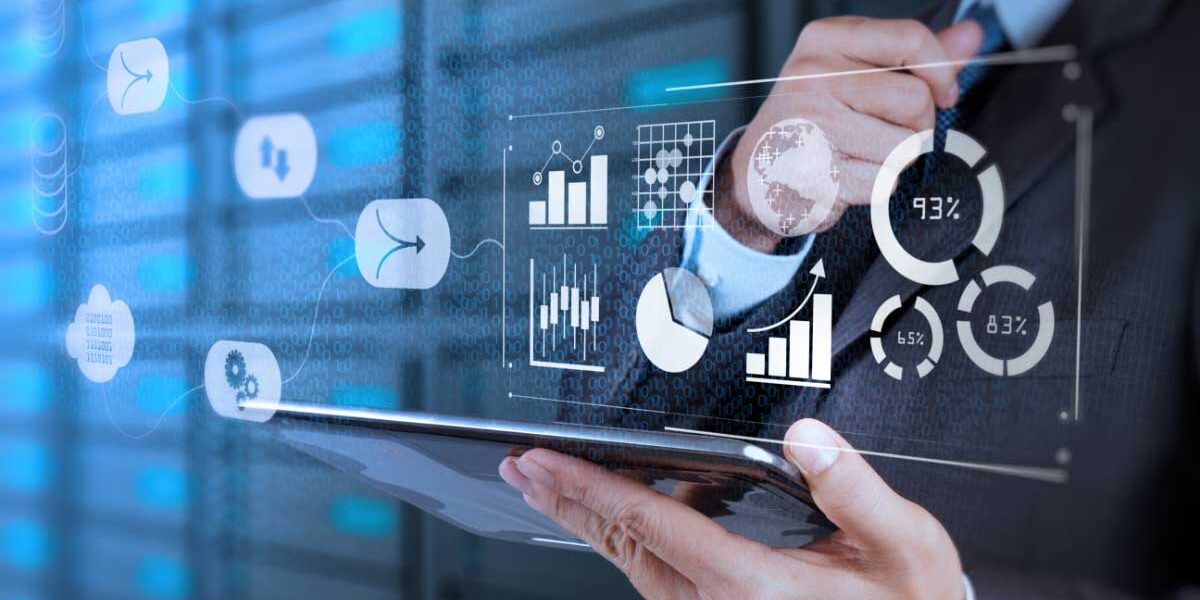But what can this data do for us? Well, you use it in multiple areas to improve our lives. Now the point is how to achieve this? The answer is- Predictive Analytics which deals with predicting the results of synopses utilizing statistical modeling of historical data. Predictive analytics is the backbone of artificial intelligence and machine learning.
Globally the market for predictive analytics was about USD 7.32 Billion in 2019, and it is predicted that this number will strike a staggering USD 35.45 Billion by 2027. Earlier, predictive analytics has been recognized as an innovative idea or had defined reasonable practice within a business ecosystem.
In the past, predictive analytics has been recognized as an innovative idea or had defined reasonable practice within a business ecosystem. It has now transitioned into a mainstream business, allowing firms of all sizes to seek a skill. On this note, let’s have a comprehensive glance at some of the top real-world use cases of predictive analytics seen today:
Nowadays, businesses often use predictive analytics to target consumers and achieve their goals. There are many examples of predictive analytics services being used in various business sectors, including healthcare, marketing, manufacturing, software testing, real estate, and many more.
To identify the future results, the predictive analytics models are integrated within systems and applications. Below are some of the real-world real use cases of predictive analytics, which proves to be the next frontier:
Predicting buying behavior
- In the retail sector predicting buying behavior is one of the biggest applications of predicting analytics. Companies use tools like advanced analytics to identify buying patterns based on past purchase history to know about the customers.
- For example, Walmart. In some cases, it used early data to know buying behavior. Small eCommerce retailers can include predictive analytics in PoS to forecast customer buying behavior. It assists in understanding customers on a broader, more personalized level.
Fraud detection
- Predictive analytics is one of the best examples of cyber security as it is now a growing issue. Fraud detection is one of the important examples. These models can recognize irregularities in the system and identify abnormal actions to manage threats.
- For instance, experts can maintain historical data of cyber attacks and warnings to the system. When the predictive analytics algorithm knows something related, it will send a notification to the individual staff. It will check the entry of hackers and vulnerabilities that might put the practice in danger.
Healthcare diagnosis

- The healthcare business is helping the most from the predictive analysis module. Health data is necessary to know the history and modern analysis of any patient. Predictive analytics models assist in understanding the disease by giving a specific diagnosis based on preceding data.
- With the way of some health factors, predictive analytics assist doctors in identifying the cause of diseases. It provides them with timely analytics to start operating on the treatments at an initial phase. With the assist of predictive analytics models, the range of adverse health effects can be prevented.
Card abandonment
- Retailers like this use predictive analytics. Cart abandonment is a huge concern. Though, models can predict how suitable a customer is to leave the cart based on records.
- For instance, by maintaining the data to the model of purchase made and cart abandoned, the model predicts how many customers will abandon it. It will also provide companies with organizations about whether they will buy or abandon the cart based on past visits to the store.
Content guidance
- One of the most relatable and obvious predictive analytics models is a content recommendation. For algorithms and models, entertainment companies can predict what customers need to watch based on their records.
- When you ask, “what organizations use predictive analytics?” The most appropriate response is Netflix. The production company uses predictive algorithms to suggest users based on style, keywords, grades, and more. The smart system uses very advanced analytics for predicting the user’s performance.
Equipment maintenance
- Predictive analytics models are important for manufacturing, healthcare, and other businesses that need planned equipment maintenance. An unexpected equipment failure can jeopardize human lives and lead to major damages for the business as well.
- For instance, by integrating IoT with equipment, manufacturing units can help data know when the equipment needs maintenance. The machinery would alert the personnel in this method, and maintenance can withdraw unscheduled and unexpected failures.
Virtual assistants
- Coupled with the potential of deep learning, predictive analytics works phenomena when used with virtual assistants. Real-world use cases of predictive analytics projects are Alexa, Ok Google, and Siri. These virtual assistants get from the user’s behavior and then produce specific results.
- Businesses also use virtual assistants that work as chatbots. It enhances the customer experience as these bots discover from communications and predict the customer’s trust. They are self-learning and allow businesses to better manage customers without using a lot of maintenance staff.
In a nutshell
With predictive analytics services well toward becoming common methods, data scientists and businesses associated have begun to turn their awareness toward the next frontier in data science: prescriptive analytics.
We noticed that infinite industries practice predictive analytics, including healthcare, finance, retail, manufacturing, and many more. They receive significant advantages by knowing future values, customer behavior, and maintenance programs to improve profitability.



